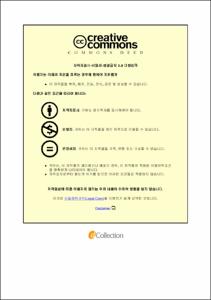목적지 심상이 목적지 이미지와 방문의도에 미치는 영향 연구: 부산 복합문화공간 F1963의 잠재방문객을 대상으로
- Abstract
- 본 연구의 목적은 목적지 심상에 관한 개념적 접근을 통해 복합문화공간의 목적지 심상의 구성차원을 도출하고 목적지 심상이 목적지 이미지와 방문의도에 어떠한 영향을 미치는 지 확인하는 것이다. 본 연구목적을 달성하기 위해 최근 도심과 문화관광목적지로 각광을 받고 있는 부산의 복합문화공간인 F1963을 조사 대상지로 선정하여 연구를 진행하였다. 조사대상은 부산에 거주하고 있는 F1963의 잠재 방문객들로 한정하여 설문조사를 실시하였으며 최종적으로 229부의 유효표본을 확보하였다. 수집된 자료의 통계처리는 탐색적 요인분석과 확인적 요인분석을 통해 자료의 신뢰성 및 타당성을 확인하였고 이후 공분산 구조방정식모형 분석을 통해 가설검증을 실시하였다. 본 연구의 주요결과는 다음과 같다. 첫째, 목적지 심상의 차원으로 인지적 심상과 정서적 심상이 도출되었다. 둘째, 인지적 심상과 정서적 심상은 목적지 이미지에 유의한 정(+)의 영향을 미치는 것으로 나타났다. 이는 호의적이고 긍정적인 인지적, 정서적 심상은 긍정적인 목적지 이미지 구축에 영향을 준다는 점을 시사한다. 둘째, 정서적 심상은 방문의도에 유의한 정(+)의 영향을 미치는 것으로 나타났으나, 인지적 심상은 방문의도에 직접적으로 영향을 미치지 않는 것으로 드러났다. 이를 통해 개인의 내면에 내재된 목적지에 대한 정서적 반응, 느낌, 연상들은 단순히 인지하고 있는 목적지에 대한 정보와 관련된 연상보다 직접적인 방문의도에 더욱 강력한 작용을 하고 있다는 것을 본 연구결과를 통해 알 수 있다. 셋째, 목적지 이미지는 방문의도에 정(+)의 영향을 미치는 것으로 나타났으며 이는 기존의 문헌에서 검증된 바와 일치하는 부분이다. 이러한 실증분석의 결과를 토대로 사회심리학적 심상의 개념을 적용해 목적지 이미지와 방문의도와의 관계를 파악함으로써 관련된 학술적, 실무적 관점에서 시사점을 도출하고 향후 연구방향을 제시하였다.
Understanding mental representation which individuals' hold on tourist destinations, often referred as a destination image, is one of major interests by tourism researchers since it enables researchers and managers to predict tourists' destination decision process, behavior intentions and destination choices. However, destination image has two major shortcomings of being atheoretical and lacking of conceptual framework and operational rigor. In order to better understand tourists' mental representations of destinations, several researchers draw on contemporary psychology to delimitate informational concepts that individuals' hold about the destinations which are destination imagery and destination image.
The purpose of this research is to implicate the conceptual approach on the cultourism destination imagery and to investigate structural relationships among destination imagery, destination image and visitation intention.
The site was selected on the urban place which is now recognized as a hot-spotted point for urban regeneration movement in Busan. 229 valid samples were acquired by using convenient sampling method approach and by conducting questionnaire targeted on the potential visitors to cultural destination. At the first phase of data analysis, exploratory factor analysis was conducted and the results of this findings suggested two dimensions of cognitive and affective destination imagery. Also, confirmatory factor analysis was done with an aim to test and verify validity for the measurement scales. Structural equation modeling analysis provided support for the hypothesis for the next step. The results revealed that both cognitive, affective destination imagery has a direct positive effect on destination image. Interestingly, affective imagery had a greater impact on destination image than cognitive imagery had. For the relationship between destination imagery and visitation intention, only affective destination imagery had a significant direct influence on visitation intention. Lastly, destination image had statistically positive effect on visitation intention which showed consistent outcome from other previous empirical researches.
Our theoretical implication suggests two dimensions of destination imagery of cultural complex space, which are again named as cognitive destination imagery and affective destination imagery. Practically, the research highlights factors of destination imagery that affect destination image and visitation intention, which can serve as a basis for tailoring the effective positioning of cultural complex space destinations. In the last part of this research, several research limitations and future research directions are discussed accordingly.
- Issued Date
- 2018
- Awarded Date
- 2018.2
- Type
- Dissertation
- Publisher
- 부경대학교
- Affiliation
- 부경대학교 경영대학원
- Department
- 경영대학원 경영학과관광경영전공
- Advisor
- 양위주
- Table Of Contents
- 목차 i
1. 서론 1
1. 연구의 배경 및 문제제기 1
1. 연구의 배경 1
2. 문제제기 4
2. 연구의 목적 8
3. 연구의 구성 10
2. 이론적 배경 11
1. 목적지 심상 11
1. 심상의 개념적 이해 11
2. 목적지 심상의 개념적 이해 14
3. 목적지 심상의 연구동향 17
2. 목적지 이미지 19
1. 목적지 이미지의 개념적 이해 19
2. 목적지 이미지의 형성과정 및 영향요인 25
3. 목적지 이미지의 연구동향 29
3. 방문의도 31
3. 연구방법 34
1. 연구모형 및 가설의 설정 34
1. 연구모형 34
2. 가설의 설정 35
1, 목적지 심상과 목적지 이미지와의 관계 35
2, 목적지 심상과 방문의도와의 관계 35
3. 목적지 이미지와 방문의도간의 관계 36
2. 변수의 조작적 정의 및 측정항목 38
1. 변수의 조작적 정의 38
2. 측정항목의 구성 40
3. 조사 설계 및 분석방법 42
4. 연구결과 43
1. 표본의 일반적 특성 43
2. 신뢰성 및 타당성 분석 45
3. 연구가설 검증 50
5. 결론 및 제언 53
1. 연구의 결과 53
2. 연구의 시사점 55
1. 이론적 시사점 55
2. 실무적 시사점 56
3. 연구의 한계 및 향후 연구방향 60
참 고 문 헌 62
설 문 지 74
국문초록 79
ABSTRACT 80
- Degree
- Master
- Appears in Collections:
- 경영대학원 > 경영학과-관광경영학전공
- Files in This Item:
-
-
Download
 목적지 심상이 목적지 이미지와 방문의도에 미치는 영향 연구: 부산 복합문화공간 F1963의 잠재방문객을 대상으로.pdf
기타 데이터 / 1.47 MB / Adobe PDF
목적지 심상이 목적지 이미지와 방문의도에 미치는 영향 연구: 부산 복합문화공간 F1963의 잠재방문객을 대상으로.pdf
기타 데이터 / 1.47 MB / Adobe PDF
-
Items in Repository are protected by copyright, with all rights reserved, unless otherwise indicated.